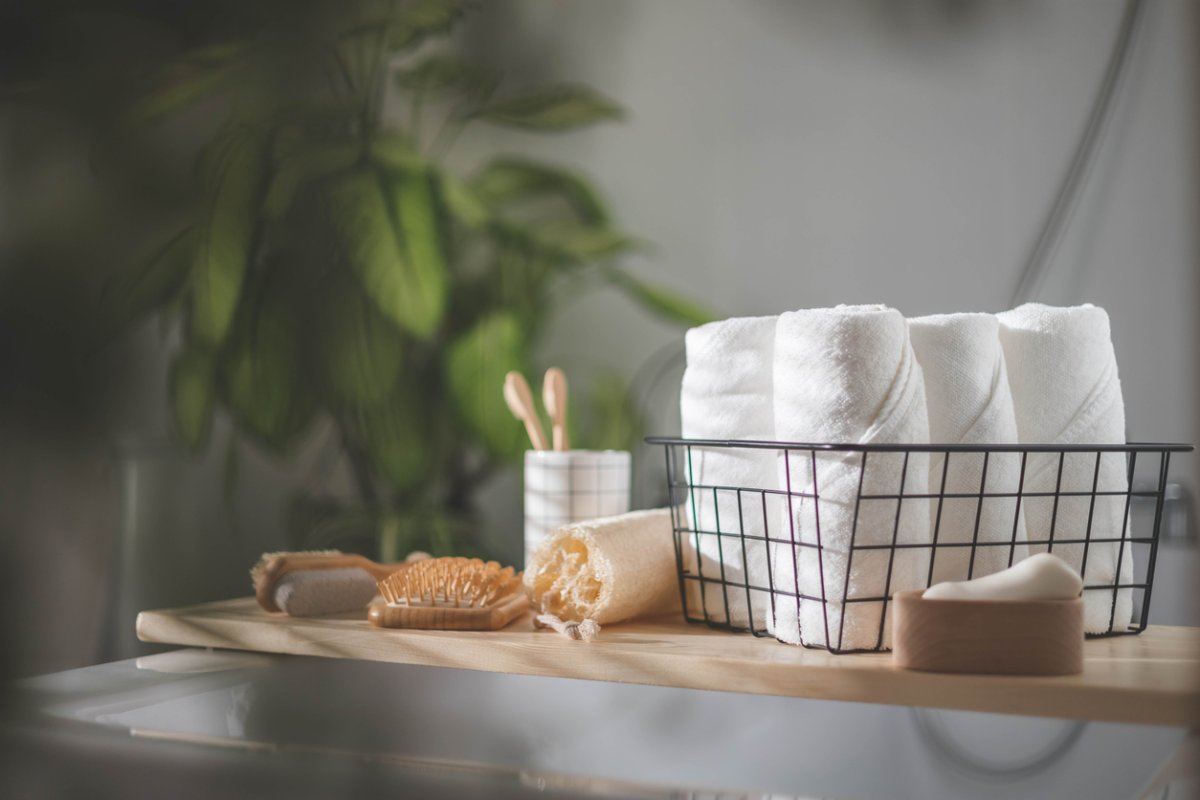

We may earn revenue from the products available on this page and participate in affiliate programs. Learn More ›
Bathrooms are where we go to clean ourselves, of course, but all that dirt, grime, germs, dead skin cells, makeup residue, hair-product flakes, and bodily effluvia has to go somewhere. While a great deal of it gets flushed, brushed, tossed, or swirled down a drain, there’s an awful lot left behind on the tools we use during our morning and evening ablutions. Without getting into too many gory details, we’ve rounded up the bathroom items that require regular replacement, along with a helpful timeline of how long to go before getting new ones.
RELATED: How to Get Your Bathroom Guest-Ready in 20 Minutes or Less
1. Loofah, Pouf, or Bath Sponge
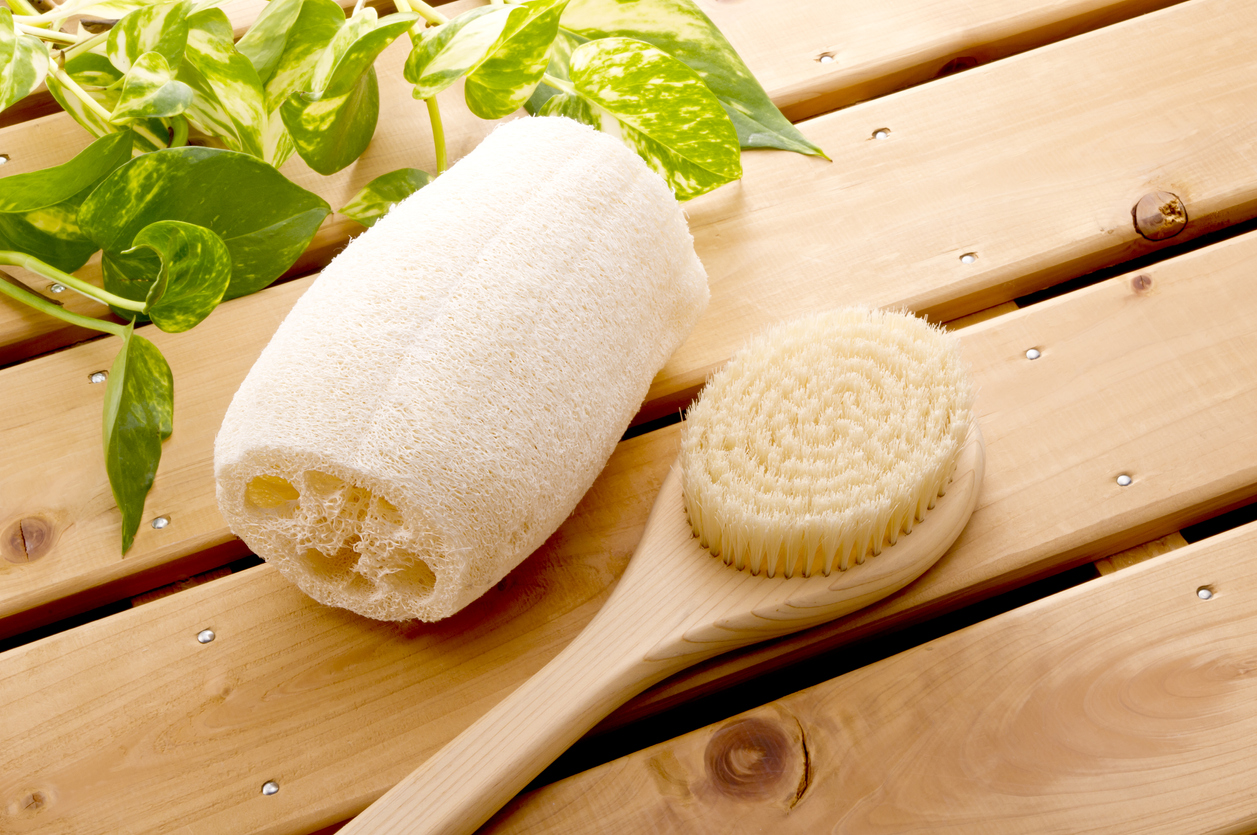
Did you know that you can grow your own loofah? The gourds from which we source our trusty shower scrubbers, which belong to the Cucurbitaceae family and are kin to cucumbers, are actually edible when young.
Homegrown or store bought, natural or synthetic, all loofahs need to be replaced regularly. The same goes for nylon shower poufs, bath sponges, and any other scrub-a-dub-dub tools. The minimum shower-shelf life of these items:
- Natural loofah: 3 to 4 weeks
- Synthetic loofah: 2 to 3 months
- Nylon pouf: 3 to 4 weeks
- Natural sea sponge: 3 to 4 weeks
- Synthetic sponge: 4 to 6 weeks
- Washcloth: every day
Washcloths are the easiest item to replace, as they can be laundered and reused. Some of the other alternatives can be laundered as well, but check manufacturers’ recommendations before you toss them in the washer.
2. Bath Mat (Outside the Tub)

Most folks have two types of bath (or shower) mats: the suction-cup rubber or plastic kind that prevents people from slipping while showering, and the plush, absorbent type that keep the floor outside the tub dry. Both get pretty grody, but it’s the latter that needs more frequent replacement. It accumulates more dust, skin flakes, hair, fecal and urinary matter, and other unsavory particulate stuff than its nonslip cousin, which is protected by the shower curtain or door.
Singles and couples can use the same fluffy rug for a week at the most; bigger families should change theirs out every day or two, to reduce the risk of bacterial and fungal issues like athlete’s foot. Ditch it altogether in favor of a brand-new one every 2 years.
RELATED: How to Remove Soap Scum From Tubs and Showers
3. Bath Mat (Inside the Tub)
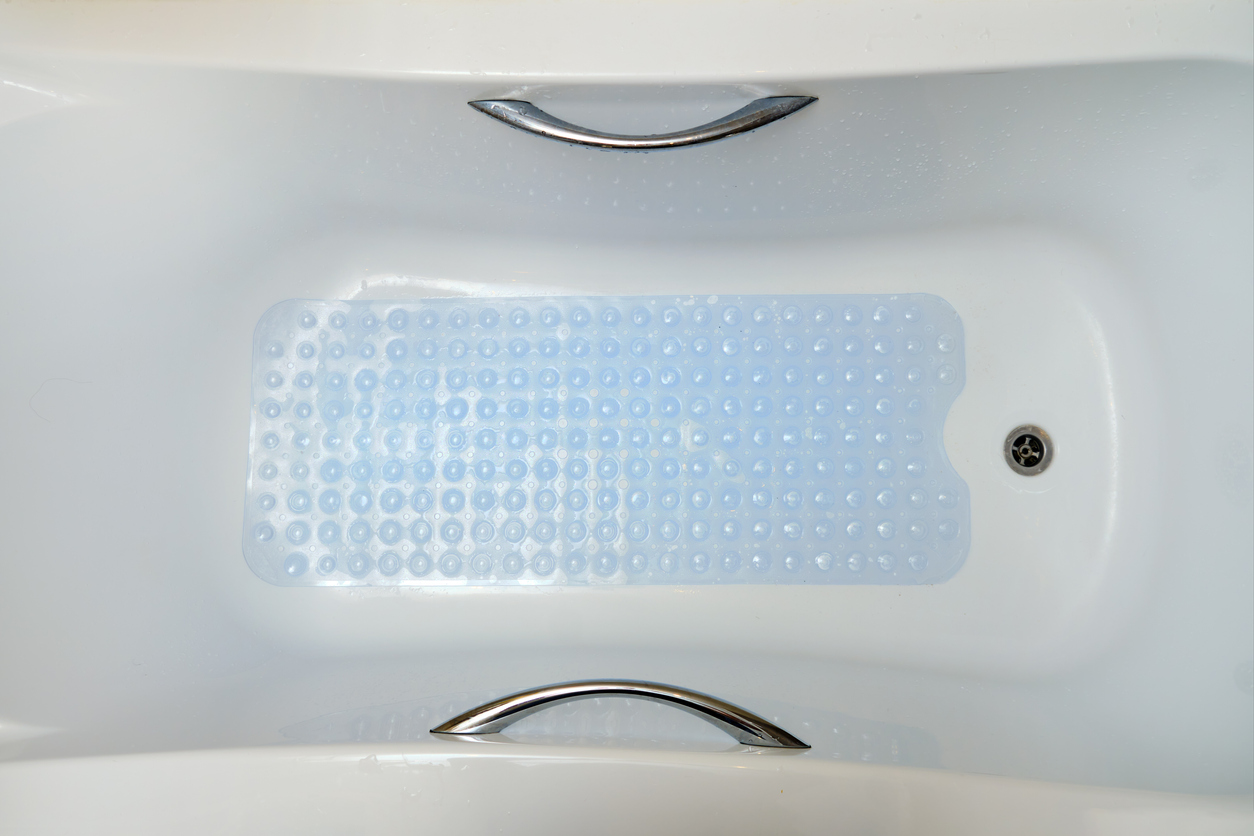
What about the mat that lines your tub or shower? Scrub it down each time you clean your bathtub, making sure to un-suction it first. (Pro tip: flip the mat upside down to prevent it from re-suctioning itself as you apply pressure.) The vinegar-and-dishwashing-liquid hack works just as well for the mat as for the tub itself. Get a replacement every few years, or anytime it becomes torn or stops staying in place.
4. Toilet Brush

When was the last time you cleaned your toilet brush after cleaning the toilet? If you’re embarrassed to say, or if you took more than a few seconds to think of the answer, it’s time. Once that brand-new one is in place, take care of it at least once a week by rinsing it (as you flush the toilet works fine) and spritzing it (and its holder) with antibacterial spray. Then, mark your calendar for six months. Replace the toilet brush then, especially if the bristles are damaged.
RELATED: The Best Toilet Bowl Cleaners, Tested and Approved
5. Bath Towels

Ever wondered why a bath towel—which is essentially used only on sparkling-clean bodies—needs to be washed at all? Three words: dead skin cells. Nine more words: Damp towels are the ideal breeding ground for bacteria. Hang your bath towels not from a hook, but fully spread out on a towel bar or over the shower-curtain bar, so that they thoroughly dry out in between uses, and you can get away with using them three or four times before laundering.
Depending on the quality of towels, they should be turned into rags and replaced every 2 to 3 years. Should they start to fray or develop holes, become less effective, or smell funky after one or two uses (a sign of deeply embedded bacteria that washing can’t remove), spring for new ones no matter how long you’ve had them.
RELATED: Your Laundry Routine Is Probably Outdated—Here’s the Modern Way
6. Hand Towels
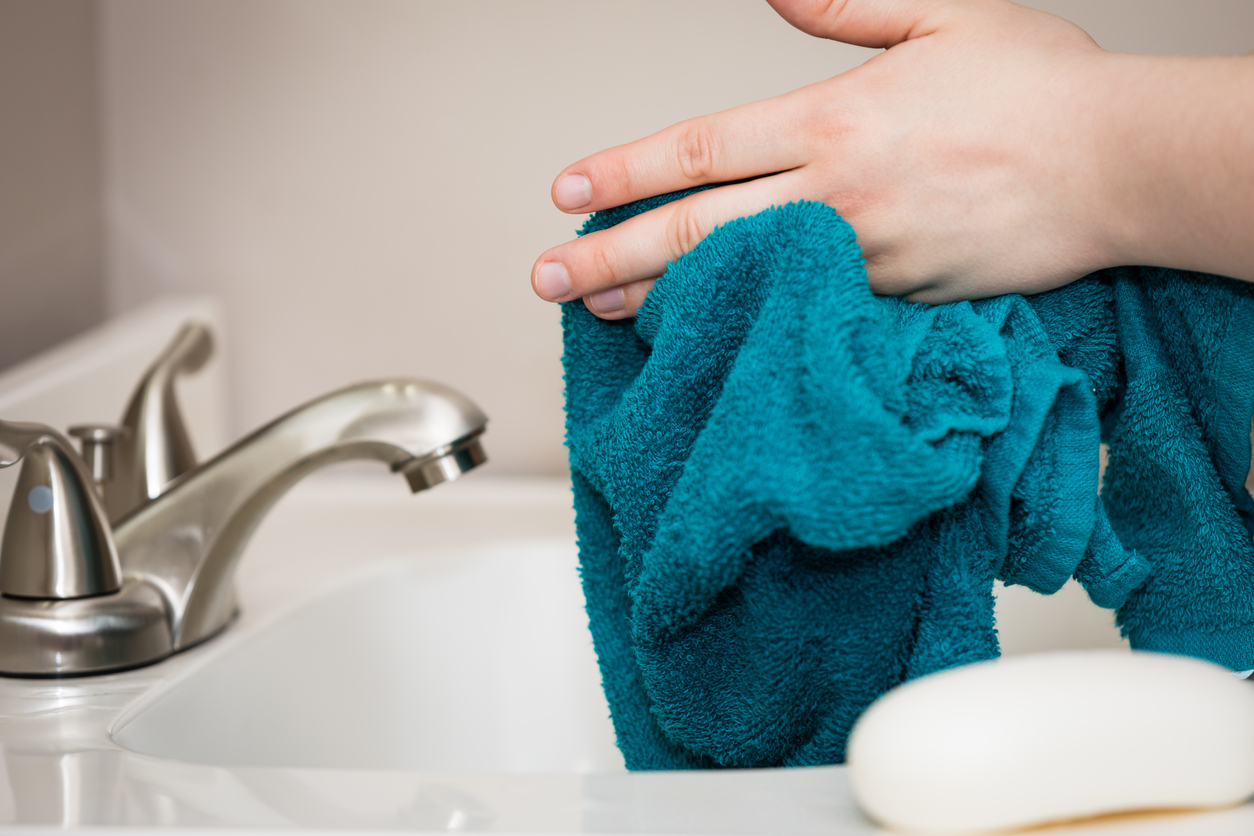
The same guidelines for bath towels apply to hand towels, except their per-use longevity. Unless you live alone, swap out these workhorse linens each day.
7. Toothbrush
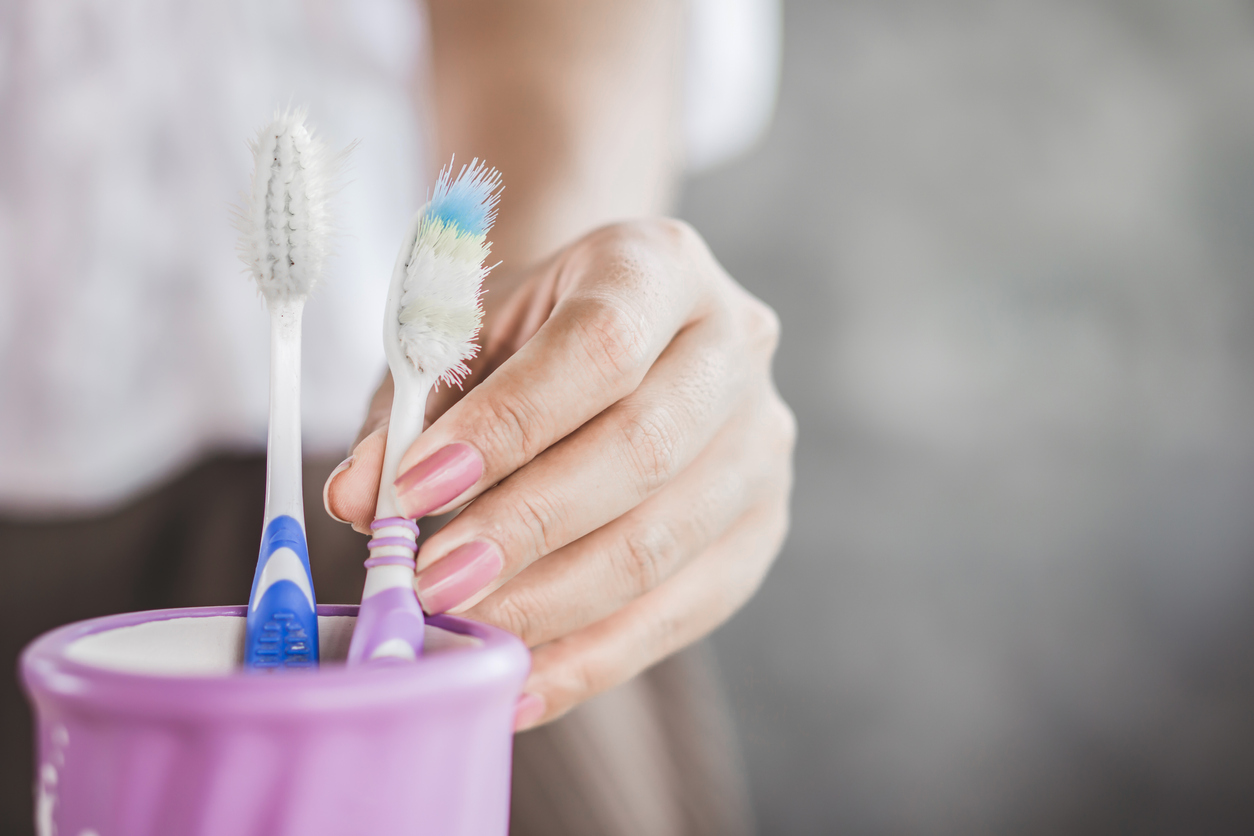
Not that we don’t trust dentists, but we went straight to the Centers for Disease Control and Prevention for the scoop. They recommend that folks switch out their toothbrush every 3 to 4 months if the bristles are still in good shape. Should you notice bent, splayed, or degrading bristles, replace the brush, but also consult with your dentist; you may be brushing too hard or using the wrong type of toothbrush.
The CDC also says that disinfecting your toothbrush by running it through the dishwasher (or microwaving it) isn’t a good idea. The high heat could cause damage. Instead, find new uses for the retired brush and pick up a new one for your pearly whites.
RELATED: 8 Ways to Mildew-Proof Your Bathroom
8. Hair Brush

The lifespan of your hairbrush can vary widely, according to stylists. It depends largely on how much you brush your hair, the type and amount of styling products you use, and even the health of your scalp. That’s because everything you brush out of your hair—flakes of dried mousse or spray, stray hairs, dandruff, sebum—gets brushed right back into your hair the next time you touch up your coif.
Give your hairbrush a deep-clean every month by removing the hair and cleansing it with warm water and a little shampoo or gentle soap. Replace inexpensive plastic or rubber brushes every6 months to a year. High-quality boar-bristle brushes can last longer, but not that much—maybe 2 to 3 years.
Naturally, if your current brush’s bristles are damaged, start shopping. Broken, bent, or missing bristles can damage your hair or make it harder to style—which in turn can cause you to use more product and/or more heat, doing further harm to your tresses.
RELATED: 9 Top Tips for a Bathroom That Cleans Itself
9. Makeup Tools
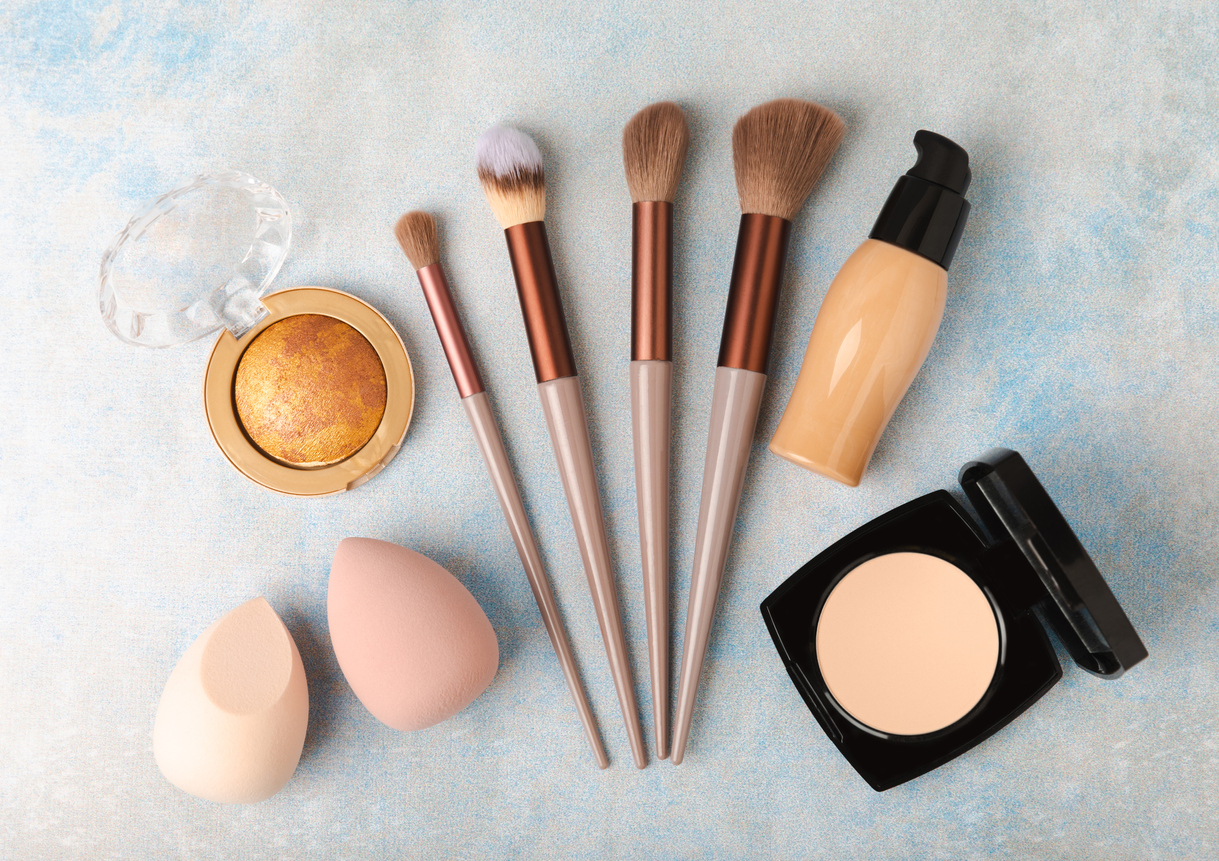
Those who wear makeup, as a rule, do so because they care about their appearance. Few people clean and replace their makeup application brushes and sponges as often as they ought, however, despite the incontrovertible fact that using dirty tools can lead to unsightly breakouts, irritation, and even infection. These issues are unhealthy as well as unattractive, so do your skin a favor by only using clean cosmetics tools.
Brushes that are used to apply powder makeup can last for a week or so without needing a bath, but makeup sponges and brushes that come in contact with liquid makeup, like foundation and lipstick, really need daily maintenance. The good news? Fancy (read: expensive) makeup brush cleansing solutions aren’t necessary. Use a gentle soap or shampoo for powder brushes. Those used for heavier liquid makeup benefit from a quick dunk in Dawn or other grease-fighting dish detergent.
Depending on the tools’ quality (and how frequently they’re used), makeup applicators can last anywhere from a few months for sponges to several years for high-end natural-bristle brushes. And don’t forget to take care of non-brush tools—tweezers, eyelash curlers, dermablades, facial rollers, sonic cleansers, and the like.
10. Razor Blades

Dirty razor blades not only harbor germs, but they put their users at greater risk of cutting themselves—ouch! Rinse your razor thoroughly after each use, swipe the blades with a cotton ball soaked in rubbing alcohol, and change out the blade cartridge (or the shaver itself, if using disposables) every five to 10 shaves. The frequency will vary, depending on how thick and dense the hair being shaved happens to be, how large an area you’re depilating, and how often you shave.
